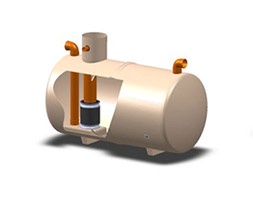Bypass Interceptors & Tanks – How Do They Work?

Bypass interceptors and tanks are components used in various systems, such as plumbing, HVAC (Heating, ventilation and air conditioning) and industrial processes. The purpose of these is to divert or control the flow of fluids within a system. They work amazingly in the following areas: carparks, roadways, fuel distribution depots, vehicle workshop forecourts and truck washes. In this blog post, we at Rouden Pipetek Ltd will discuss how bypass interceptors and tanks work in more detail.
Bypass Interceptors
Bypass interceptors allow a portion of the fluid to temporarily bypass the main flow path. They are commonly used in plumbing systems, particularly for applications like water softeners, filters or chemical treatments. Bypass interceptors typically consist of valves or adjustable diverters. By manipulating these valves or diverters, you can redirect the fluid flow from the main path through the bypass path.
Bypass Tanks
Bypass tanks, also known as bypass filters, are used in various applications to filter or separate contaminants from fluids. They are commonly found in oil filtration, hydraulic and industrial processes. Bypass tanks consist of an inlet and an outlet connected to the main fluid system. The fluid flows through the inlet and is directed into the bypass tank, which undergoes filtration or separation.
Also, within the bypass tank, there are various filtering media, such as filter cartridges, filter bags or centrifugal separators. These components are designed to remove impurities from the fluid. The filtered or separated fluid then flows out of the bypass tank through the outlet and returns to the main system.
Contact Us
We at Rouden Pipetek Ltd are a renowned drainage and pipework supplier with years of experience and industry knowledge. Contact us today to find out more about bypass interceptors and tanks. We look forward to speaking with and hopefully being of service to you.
